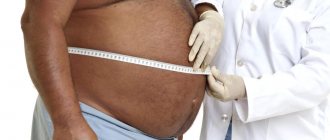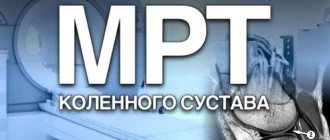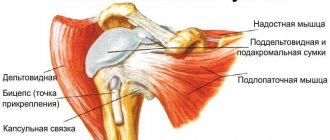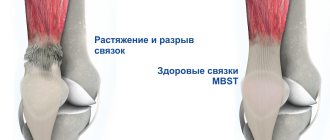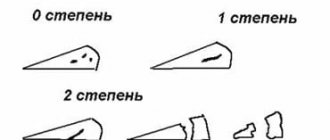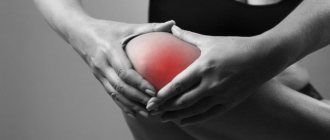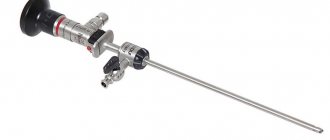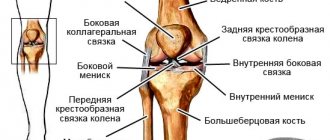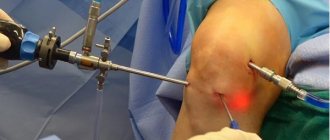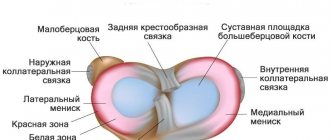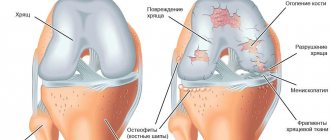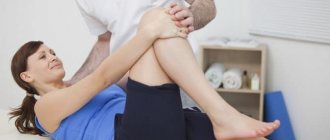Sprains are not just a problem for athletes. Anyone can trip or strain a tendon, making walking awkward and painful. With a sedentary lifestyle, this happens much more often than with daily intense physical activity: the ligaments are weakened, not ready to deform, and the slightest blow can cause distortion. It is important to know what medications are available to maintain ligament tension and relieve inflammation so that you can return to a full life without pain.
- Ointments for ligaments: main types
- Options for ointments and gels for ligaments
- Finagel
- Nimesulide gel
- Indovazin
- Diclofenac gel
- Finalgon
- Nicoflex
- Traumeel S
- Phong Thap Thu
- Purpose T
- Ointments for joints
- Osteozan cream
- Chondroxide
- Viprosal B
- Ointments for athletes
- Results
Ointments for ligaments: main types
Experts say that the best ointments for treating ligaments are drugs that act comprehensively. They contain a number of active ingredients that reduce inflammation, relieve pain, reduce swelling and provide cooling, providing relief. We can distinguish such types as non-steroidal anti-inflammatory, local irritant and homeopathic, which differ not only in composition, but also in their mode of action:
1. NSAIDs. Topical NSAIDs are good because they allow the active ingredient to be delivered directly to the source of pain. In this case, the stomach, intestines and liver remain intact and are not subject to side effects. The risk of complications here is minimal. There are several popular drugs that have proven their effectiveness in practice.
2. Locally applied irritants. This only causes a reaction at the site of application. They irritate the nerve endings of the skin and dilate blood vessels. They partially enter the bloodstream and affect the immune system. Among the ointments and gels for joints in this group, there are 3 best and most effective in terms of speed and minimal side effects. 3. Homeopathic medicines. Created on the basis of natural substances that are gentle on the affected area. They are distinguished by the fact that the course of treatment is quite long. The most common natural-based drugs have gained popularity due to their effective effect on the source of inflammation.
Ointment for muscle strains: classification of types
In the initial phase, when spraining ligaments and muscles, it is necessary to use anti-inflammatory and analgesic ointments. The following types of drugs can be distinguished:
- Nonsteroidal drugs. They have a mild cooling effect. Medicines are available in the form of creams and ointments. They help quickly eliminate pain syndromes and inflammatory processes. Ketaprofen, Voltaren and many others belong to the group of non-steroidal drugs. These include the following potent substances - diclofenac, indomethacin, ibuprofen.
- Anticoagulants. These medications help improve blood flow. The ointment is an excellent tool for preventing the formation of blood clots in blood vessels, which can occur when muscles and ligaments are sprained. It is important to apply medications containing anticoagulants to the injured area during treatment and recovery. These drugs are used to prevent vascular diseases. They also help relieve foot discomfort.
- Cooling. These include menthol and camphor oil. These ingredients help relieve cramps by relaxing muscle tissue.
To treat sprains and muscles, your doctor may prescribe ointments containing steroid hormones. Their effectiveness lies in the fact that hormonal drugs help suppress inflammatory processes. After the first use, swelling decreases and the permeability of the walls of blood vessels decreases.
Ointment for muscle strains: cooling
The main purpose of cooling ointments for sprains and muscles is to cool the damaged area of the body. The patient will feel pain relief. For this reason, cooling ointments are recommended in the first days after a dislocation.
The composition includes essential oil and menthol. They help relieve swelling and get rid of bruises. The analgesic effect is due to the presence of a strong analgesic in the composition. Ointments for sprained ligaments are selected taking into account the type of injury.
The following effective drugs can be identified:
- Myoton. This product contains medicinal plants, oils, and other auxiliary components. The ointment is prescribed to relax muscles. The main effect of the drug is antiseptic and anti-inflammatory. A small amount of ointment is applied to the damaged area of the muscle or tendon. It should be rubbed in with light movements.
- Ben-Gay. Contains menthol and methyl salicylate. The presented remedy helps relieve pain in muscles and joints. The manufacturer indicates that regular use of the ointment reduces the feeling of morning stiffness and also has anti-inflammatory properties. This is a lotion that is often used by athletes to relieve soreness from closed injuries after training and exercise.
- Flexall. The presented ointment is highly effective. Used to relieve muscle tension after injury. In addition, this remedy has an analgesic and anti-inflammatory effect.
- Bystromgel. This product has a cooling effect and perfectly relieves inflammation in the joints. It is intended for patients with traumatic injuries of tendons, ligaments and muscles. The drug relieves swelling, pain and inflammation well.
- Repaired the gel. Main indications for use: soft tissue injuries and bruises. The ointment is good for sprains or torn ligaments. The product copes well with the resorption of hematomas. After the first use, it relieves swelling well, eliminating venous insufficiency.
Cooling ointment for sprains Bystrongel
Cooling ointment can be used immediately after a closed or severe injury. This is an excellent remedy to help get rid of painful sensations.
FAQ
What are the symptoms of a sprain?
Sprains and ruptures of ligaments can occur with fractures and dislocations. Let's look at the symptoms characteristic of a common sprain:
- 1. Pain when moving the joint (with a fracture - the inability to move the affected limb) or when stepping on the leg.
- 2. Swelling around the affected joint, hematoma at the joint site or below.
- 3. With a complete rupture of the ligament, oddly enough, the joint becomes too mobile. If the rupture is incomplete, movement is limited.
- 4. At the time of injury, you can hear a characteristic cracking or popping sound.
If you have such symptoms, we recommend that you consult a specialist for an accurate diagnosis.
How to properly treat a sprain?
Most often, treatment is conservative and is aimed at restoring joint mobility, “healing” and restoration of ligaments. The treatment process for a sprain (not a tear) includes the following:
- 1. Applying a bandage to the damaged joint.
- 2. In the first 2-3 days - apply ice or use cooling, analgesic ointments.
- 3. Elevated position of the limb.
- 4. When the swelling begins to subside, you need to start doing exercises.
The acute period of sprain usually resolves within 1-2 weeks, after which maintenance treatment is required.
Ask your question
Ointment for muscle strains: Warming
Warming ointment soothes aching muscles and joints. This remedy is recommended for various bruises and injuries. The action of the ointment is based on the filling of injured soft tissues with blood.
Warming agents should not be used in the first 3-4 days after injury. The following funds can be identified:
- Venoruton-gel. The ointment helps improve the tone of the veins. The product is used in the treatment of diseases of the musculoskeletal system. After using the drug, swelling and muscle soreness are relieved.
- Deep relief. The drug relieves severe pain and stiffness.
- Dolbene. The ointment eliminates pain, swelling and swelling. It is used to relieve bruises and inflammation in muscle tissue and tendons.
Venoruton-gel warming ointment
Warming ointments should be used strictly according to the instructions. When increasing the recommended dose, the patient may experience discomfort.
Painkillers
Many types of injuries are accompanied by pain. The following drugs can be distinguished:
- Long. This is an anti-inflammatory drug that relieves pain. After the first use, the swelling begins to gradually decrease. The drug is prescribed to patients diagnosed with sprained ligaments and tendons.
- Capsicum. The composition includes a powerful component - dimethyl sulfoxide, which penetrates deep into soft tissues. After use, the product helps improve blood circulation, allowing ligaments and muscles to recover faster.
- Finalgon. The main powerful ingredient is nonivamide. It helps dilate blood vessels, improve blood circulation and eliminate muscle soreness.
Thanks to its structure, the ointment quickly penetrates soft tissues, helping to eliminate pain and discomfort.
Anti-inflammatory
Many injuries, including sprains, are accompanied by an inflammatory process. With this pathology, it is prohibited to use drugs that have a warming effect. Anti-inflammatory ointments for sprains and tendons contain an analgesic that reduces pain.
- Ketonal. The ointment has an anti-inflammatory effect, which helps relieve pain and swelling. The enzymes involved in the process cannot be released freely.
- Fastum gel. This is an anti-inflammatory drug with a non-steroidal effect. After the first use, inflammation in muscles, tendons and joints is relieved. Patients feel relief. Blood circulation in the damaged area improves. Thanks to its gel-like consistency, the drug easily penetrates into soft tissues.
- Turpentine ointment. The drug has anti-inflammatory and antiseptic effects. The composition includes plant components that can penetrate the upper layers of the epidermis. As a result, the soft tissues to which the blood flow is applied are irritated. Indications for use: neuralgia, muscle pain, inflammatory processes.
Anti-inflammatory ointment for sprains Fasuem gel
One of the main advantages is the quick effect, which appears within 20 minutes after applying the ointment. To improve the effect, a light massage is recommended.
joint
joint
Sprained knee ligaments are considered one of the most common injuries. The problem is especially relevant for athletes. Until recently, injuries of this nature could mean a premature end to a sports career. Some anatomical features also contribute to the development of pathology. The main reasons that knee reconstruction is required after a torn ligament are:
- increased physical activity;
- engaging in strenuous sports;
- falls, blows, other injuries;
- excess weight;
- wearing high-heeled shoes.
Depending on the specific cause of the damage, specialists at Dr. Glazkov’s clinic prescribe effective treatment that allows you to get rid of unpleasant symptoms once and for all.
Criterias of choice
Only a doctor can select an ointment or gel, taking into account the type of injury received, the severity and clinical symptoms. If the patient chooses the drug himself, he may experience negative side effects. They often cause symptoms to worsen.
The following selection criteria can be selected:
- Many ointments have a complex effect. Medicines simultaneously relieve pain and bleeding.
- Contains lidocaine. Helps relieve wound pain.
- Antibacterial composition. If the infection gets into an open wound.
For mild symptoms, preference is given to venotonic drugs. Before starting use, be sure to read the indications and contraindications.
Anatomical features
From a medical point of view, knee sprains require recovery due to the severe muscle spasm that occurs immediately during the injury. Damage to any of the bones will lead to the development of joint disease. Some injuries immediately manifest themselves as unbearable pain. But it also happens that a person continues to lead an active lifestyle, ignoring alarming symptoms, thereby aggravating his condition. Treatment in this case will be longer; it is difficult to guarantee a 100% positive result even for the best specialists. Therefore, if the slightest symptoms appear and suspicions that recovery is required after a sprained knee joint, it is better to immediately contact Dr. Glazkov’s clinic in Moscow. Here, patients will be given an accurate diagnosis and, based on the data obtained, qualified treatment will be prescribed.
Ointments for sprains in children
Young children often injure their hands and large joints. At home, it is important to provide first aid to the baby. It consists of the following recommendations:
- applying a cold compress; using painkillers;
- applying a tight bandage.
- For bruises, children are prescribed the following ointments, which contain ingredients of natural origin. These are dexpanthenol, oleoresin and heparin. The following effective countermeasures can be identified:
Dolbene. The ointment has an anti-inflammatory, anti-edematous effect. Has a local anesthetic effect.
- Traumeel gel. The drug promotes rapid healing of wounds and bruises.
- Capilar. The ointment can be used by children from 1 year of age. It should be used with light massage movements so as not to injure additionally damaged ligaments and muscle fibers.
- Children's ointment for sprains Traumeel gel
The presented drugs can be used on the 4th day after the injury, when the pain and swelling of the foot subside. Additionally, the affected joint is fixed with a tight bandage.
Each tool has its own advantages and disadvantages. The ointment or gel does not penetrate the gastrointestinal tract, so it does not interfere with the functioning of the esophagus. The drugs are quickly absorbed into soft tissues and their effect begins 5-10 minutes after application. It is not recommended to buy cheap lotions, creams, gels and ointments for sprains as analogues.
Computer tomogram
Computer tomogram
Sometimes it is enough for a traumatologist to use only one of the above methods to accurately determine the degree of tissue damage and prescribe qualified treatment. In severe cases, the patient may need surgery to repair knee ligaments. This is a safe procedure that can effectively eliminate problems with lower limb mobility. Next, the patient is recommended a list of activities and procedures necessary to speed up the rehabilitation period.
Pros and cons of using ointments
Availability. Pharmacies have cheap and low-cost drug options.
The following advantages of ointments can be highlighted:
- Ease of use.
- Fast action.
- Does not affect the digestive tract, kidneys and liver;
- Treats acute pain syndrome.
- Strengthening blood vessels.
- Minimal number of contraindications. Ointments and gels can be used by pregnant women, as well as girls who are breastfeeding.
- Before purchasing and using, it is also important to familiarize yourself with any defects. Ointment preparations can leave greasy marks on clothes, which are not always removed by washing. The drugs must be combined with tablets and mixtures. Otherwise, the treatment will not be effective.
Using ointment for sprained muscles and ligaments is an effective remedy in the fight against pathology. This is an important stage of treatment. In order for the therapy to be effective and the ligaments to recover faster, it is important to consult with a traumatologist before use. He will prescribe the use of a specific drug and indicate its dose.
